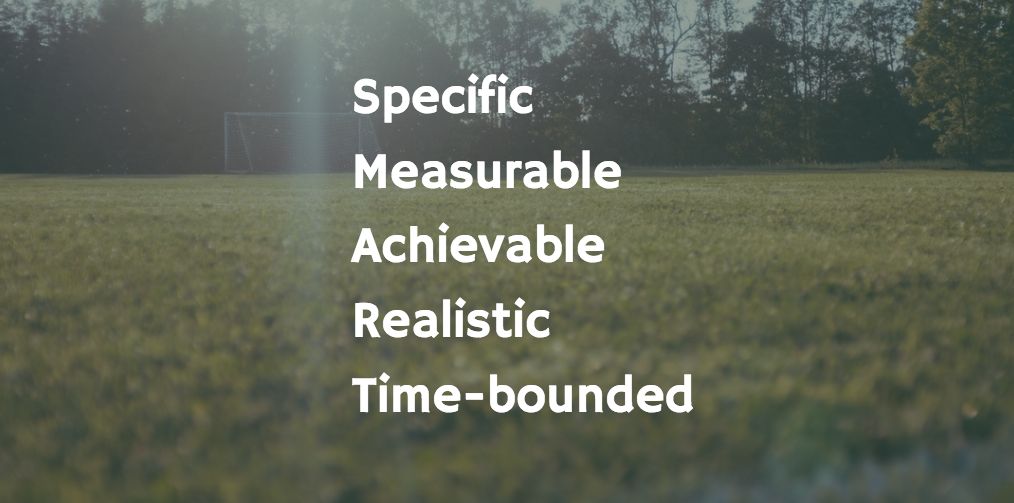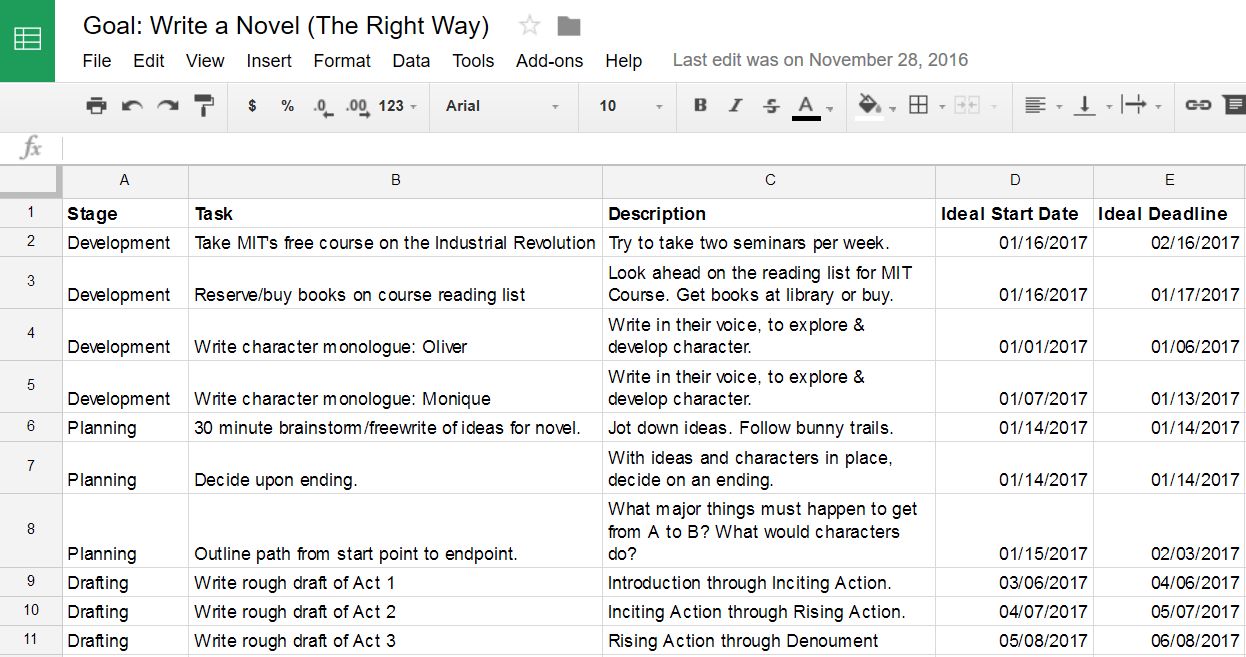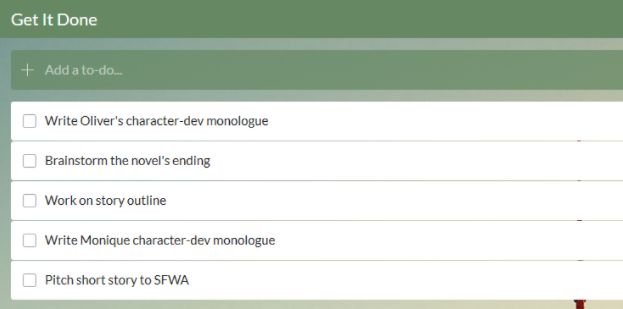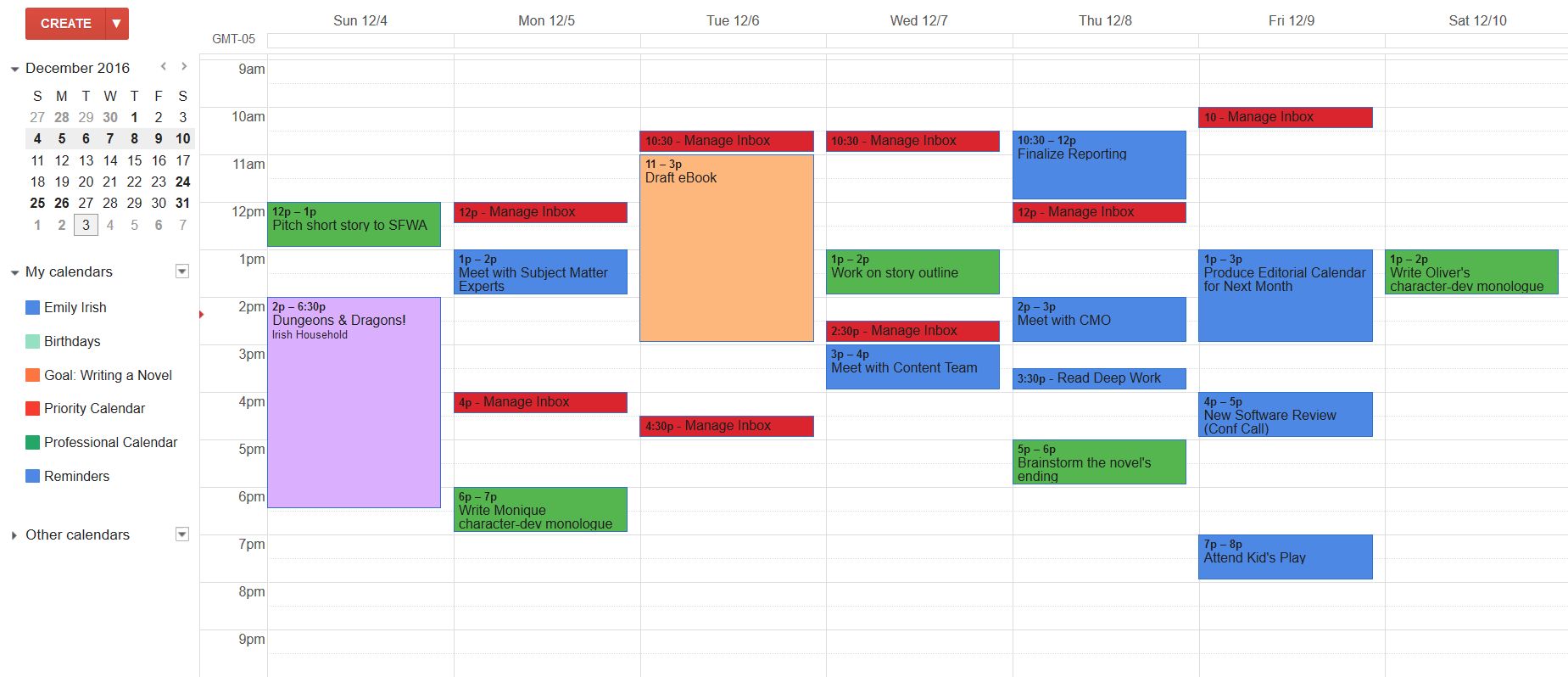Reach Any Goal This Year with a Spreadsheet, a Calendar, and the SMART System
- Get link
- X
- Other Apps
You have a new goal. Maybe it’s January and you’re ready for a fresh start. Maybe it’s July and you’re ready for change. Regardless, you’ve got the vim and vigor to make this happen.
But then you worry. People abandon their goals all the time. After six months, for example, over half of New Year's resolution makers failed to stick to their plans. How will your attempt be any different?
The answer is that you won’t just write a to-do list and hope for the best. You’re going to make a plan—a HARD and SMART plan that will make your goals more achievable. And, with the help of automation, you’re going to overcome any impediments that might stop you in the process.
Achieving big goals isn't easy, which is why most people don't accomplish most of theirs. But with the proper framework, you can do just about anything.
Here's how to go from goal setting to celebrating your goal accomplishment. All you need is your favorite to do app, a spreadsheet, and Google Calendar.
- Set Goals That Are HARD
- Build a SMART Plan Around Your HARD Goal
- Make the SMART Plan Part of Your Life
- Overcome Excuses and Accomplish Your Goals
Set Goals That Are HARD

The first step, of course, is setting a goal, but that's not as easy as it sounds if you want to actually achieve the goal. It's actually HARD. [Ed note: pun intended.]
The problem of setting great goals is double-edged: On the one hand, you need a goal that will motivate and inspire yourself or perhaps the people you manage. But on the other, you need goals you can actually accomplish.
The solution: Set goals that are HARD, then create a SMART roadmap or plan of action.
Coined in the late 19th century, the SMART goal criteria has been widely accepted as the standard in goal setting. This method requires goals to be Specific, Measurable, Achievable, Realistic, and Time-Bound.
However, recently Leadership IQ studied the predictors of whether someone’s goals (career or personal) would help them achieve great things. The researchers found that setting SMART goals didn't necessarily mean you'll have a greater chance of achieving those goals.
They did find, however, from surveying over 4,000 workers from nearly 400 organizations, the most achievable goals you could set. You can remember it by the HARD mnemonic:
- Heartfelt: enriching your own life and the lives of others. Who else is impacted positively by the achievement of this goal?
- Animated: and vivid in your imagination. What does my business, career, or life look like when I achieve this goal? (Visualize it!)
- Required: for personal or professional well-being. Why is this goal so necessary? What are the stakes (personal or professional)?
- Difficult: forcing you to leave your comfort zone and learn new skills. What will I have to learn to accomplish this? Where will I have to stretch myself? (Record this answer in great detail.)
It might seem like the SMART system is in direct opposition to the HARD system, but with mindful application, they actually complement each other well.
When you’re setting your business and personal goals, tap into the power of intrinsic motivation by detailing the HARD criteria of your goal.
Use these questions to vet every goal you have to make sure they're ones you can actually achieve and are worthwhile. Goals are personal and should be hard to decide on; you only have so much time after all. For example, maybe you have an inkling to write a children's book or learn a new language. Depending on where you want to be in the near and not-so-near future, these could be important or, after reflection, not important goals.
Once you have this big-picture vision of your goal, it’s time to get SMART. As effective as HARD goals are, it’s easy to lose the initial power behind them if you don’t have a solid plan in place.
Now let's learn how to create a SMART plan using a spreadsheet and a calendar, as well as how to leverage them to overcome internal excuses.
Build a SMART Plan

Once you have solidified your goal, it’s time to make a SMART plan of action. To keep yourself from becoming overwhelmed with your goal, you’re going to make a spreadsheet roadmap that includes all the tasks that lie between you and your goal.
You’ll want to create at least four columns in this spreadsheet:
- Task
- Description
- Ideal Start Date
- Ideal Deadline
It may also be helpful to add criteria like “Stage” or “Phase.”
When trying to decide what counts as a "task," keep the SMART criteria in mind. The goal of this criteria is to minimize the amount of friction between you and achieving your goal.
Specific. Give yourself several small, specific mini-goals to accomplish that are all part of the larger goal. This provides the clarity and focus you need to get everything done.
Measurable. Each task should have some form of measurement attached to it–give each task clear success criteria. This relieves indecision and streamlines movement from one task to the next.
Achievable. Each task should be something you know you can do with hard work and self-education. This provides the confidence and clarity you need to reach the larger goal. When setting tasks, take the time to understand your strengths and limitations (time, skill, and resources) and how they’ll affect each task, so you can keep tasks achievable.
Realistic. Stepping outside your comfort zone is crucial to growth, so don’t let this realistic criteria hold you back from dreaming big. But your SMART plan isn’t the place for big dreams. It’s the place for mapping the road between you and that big dream. Keep tasks realistic (for example, “write 700 words every day” versus “write a blog post every day”) even though they may be difficult.
Time-Bound. If you have month-long deadlines for a task that will take you 3 hours, you’re much more likely to procrastinate and delay your overall progress. Don’t sign up for more than you can handle, but make sure there’s enough of a time gap to keep you focused.
Make Decisions Now
When it comes to your SMART plan, there are really only two options: the easy way and the right way. The easy way looks like this:

At first glance, this may seem like a good plan. I’ve assigned tasks into stages and given myself consistent start dates and deadlines. I’ve even given myself unique tasks for the building blocks of my goal.
The problem is, when January 1st rolls around and I sit down to work on these goals, I’m suddenly bombarded with questions and decisions:
Which character should I start with? How do I become an expert on the Industrial Revolution? What resources are out there and how can I find them?
You see the problem. I waste time—and may give up altogether—if I spend my momentum on making small decisions in the moment.
Take the time to make the small decisions now. Focus your brainpower on breaking your goal into individual actions. Trust me: it’s easier to do this all at once.
A more detailed plan like the one below gives me more direction and control, so I waste less time figuring out what to do and instead just do it:

Once you’ve set up your plan with the concrete details, it’s time to start using it!
Make Your Plan Part of Your Life
You can have the best plan in the world, but if you don’t translate that plan into daily actions and habits, it won’t matter. Starting with a thorough plan gives you a lot of options for integrating into your daily life. Get creative! But first, make sure you at least cover these two things.
1. Get Your Plan Into a Project Management or To Do List App
A spreadsheet will help you get everything organized, but it won’t help you stay on track daily. Your next step is to translate your plan from a spreadsheet into an app where you’ll regularly keep tabs on its progress.
For some goals, this will be a project management tool. For others, a task management or to do list app is sufficient. It's tough to know which is best for your unique situation, so here are some criteria to consider when picking a home for your goal plan:
- Does your goal require collaboration or rely on the work of others?
- Does my SMART plan include many and frequent tasks and subtasks?
- Do you need to keep track of completed tasks for later?
- Does complex software with a lot of options distract you?
Generally, project management software is better when collaboration and multiple tasks, subtasks, and assignments are required. Task management and to-do apps provide varying levels of complexity, but are focused more on organizing yourself versus organizing a team or company goal.
When deciding which app to use, start with the 5 types of to-do apps, and pick the best one for you. Once you know the app type you want, browse our roundup of the the Best To Do Apps for your new favorite. Or if you’re more analog when it comes to goal-tracking, learn how you can build the perfect productivity system with paper notebooks and digital tools.
Regardless of which app you choose, do not view all tasks at once. Keep focused on the very next step. Setting a daily or weekly filter on your dashboard or list will help you stay on track.
2. Give Your Tasks Visibility
Also make sure that your task data is imported into Google Calendar. This is an important step because it adds big-picture visibility and automated reminders.
Create a separate Google Calendar for each goal, so you can view your tasks separately or together with your daily calendar(s). When you keep your goal tasks visible with your daily and professional tasks, it’s easier to prioritize them and make room for achieving your goals.

Automate! The good news is you don’t have to spend a lot of time on this step. You can get it done in roughly five minutes with Zapier, an automation tool that connects over 1,200 apps. Start by creating a new Google spreadsheet. Keep it blank for now and give it a name like “Goal: Write a Novel (Workflow).”
Then, in Zapier, simply set up a “Zap,” or automated workflow, between Google Sheets, your to do app of choice, and Google Calendar.
Once you’ve created your workflow, copy your entire SMART plan spreadsheet and paste it into your workflow spreadsheet and voila! Your plan will auto-populate, with the tasks from your spreadsheet automatically sent to your calendar and to do app, so you can focus on achieving your goals, not managing them.

Overcome Excuses
You'll come down from the Lurch with an unpleasant bump.
And the chances are then that you'll be in a Slump.
And when you're in a Slump, you're not in for much fun.
Un-slumping yourself is not easily done.
~ Dr. Seuss, Oh the Places You’ll Go
The hardest part of a achieving your goal is not the ideation or even the planning. It’s sticking to your plan when the road gets rough.
Maybe you missed a deadline and that threw your schedule off. Maybe your plan requires more time than you realized. Maybe you’re just overwhelmed.
The good news is, you can “un-slump” yourself. Read on for the three most common roadblocks to achieving your goals and how you, armed with your plan and a fresh mindset, are going to overcome them.
“There’s Not Enough Time in the Day”
We’d get the promotion if we had more time for The Project. We’d have more subscribers if only we had time to write more content…
The list is endless. The truth of the matter is, every great accomplishment has been made by men and women with the same 24 hours you have. What matters is not how much time you have, but how you approach it.
Start by reminding yourself: you do have the time to achieve your goals. And then start making time for the things that matter.
Auto-Schedule Time for Your Goals
A great trick to hacking your time management is blocking time in your schedule specifically to work on your long-term goals. But too often, when we get to these precious scheduled moments, we spend our best energy deciding what to do.
Again, the goal of a SMART approach to planning is to batch decision-making, so that you can focus on the hardest part: doing.
A solution that I’ve personally found very helpful is to automatically schedule tasks for yourself. Here’s what I mean.
When I create my weekly calendar, I work in blocks of time that I know I want to spend working on my goal (in this example, writing a novel).
But Monday morning is rarely the best time for me to figure out exactly how I should be using these time blocks. Instead of spending extra time on scheduling, I automate the process.
In Wunderlist, I have a special list just for this purpose. The tasks on this list are tasks that really need focus, like writing, planning, strategizing, etc. Usually, they’re also the tasks I have trouble prioritizing. I update this list every Monday morning when I’m planning my week.

On my calendar, I have appointments named “Open Focus Time Slot.” Whatever you decide to name these time blocks, make sure every calendar appointment has the same name. Then, I set up a Zap that automatically schedules my tasks in the next available focused time slot.

There are three benefits to this approach that I don’t find in manual scheduling.
- My list of “nice to get to sometime” tasks actually gets done.
- I don’t waste time pondering whether I should do Task XYZ on Wednesday or Friday.
- I don’t leave myself the wiggle room saying “eh, I’d rather not do that this week/today”—what’s added to my calendar is treated with the rigidity of any other meeting or appointment.

One caveat to this - you may want to set up multiple lists / focus appointments for tasks that need varying amounts of time. I may need a 90-minute slot for writing 1,000 words, but only a Pomodoro-sized slot for another task.
The moral of the story is: Don’t spend your energy on making decisions in the moment. SMART planning + smart automation = efficient use of time.
“Help! My Goals are Overwhelming Me!”
The second-most common reason people quit is that they become overwhelmed with their own goals. There’s a lot of great advice out there to help you push forward when the going gets tough - everything from keeping a failure resume to meditating.
I have two tricks that I’ve found immensely helpful and in line with a SMART approach.
Tackle One Day at a Time
First, let’s focus on the Specific, Realistic, and Time-Bound aspects of your plan. Looking at your 1-year, 5-year, or 10-year plan too often will quickly overwhelm you. Reviewing your entire SMART plan spreadsheet regularly is not the greatest idea either.
Instead, you need to trust your planning phase, update only as necessary, and then take it one day at a time. Don’t start worrying about tomorrow or next month’s deadline. Focus on today.
To keep my focus firmly tied to the now, I set up another Zap when I initially made my SMART plan. This Zap delays each task in my plan until the start date I defined for it. This way, my to dos only appear when I can and should start working on them.

Measure Yourself by the Right Metrics
Another reason for becoming overwhelmed is that you’re measuring yourself with the wrong metrics. This is the Measureable and Actionable part of the equation.
Most of us measure success in terms of “lag measures.” These are the desired results: the increase in customer satisfaction scores, the uptick in blog subscribers, the number of articles or books published.
The problem with these metrics, as detailed by the authors of The 4 Disciplines of Execution, is that: “When you receive [these metrics], the performance that drove them is already in the past.” Lag metrics do a great job of measuring the goal, but they lack direct impact on your day-to-day behavior.
In contrast, lead measures “measure the new behaviors that will drive success on the lag measures.” This form of measurement follows two criteria:
- It’s predictive. It measures something that leads to the goal.
- It’s influenceable. It’s something that’s within your power to influence or control.
Continuing my noveling example, a lead measure would be writing 1,000 words every day. If I set myself a goal of “finish a first draft in three months,” I become easily overwhelmed and discouraged. But breaking down my goal (average novel length), I find that, if I write just 1,111 words every day (1-3 hours of work), I can hit 100k words in 3 months. This metric is both predictive and influenceable—as well as easily tracked.
Save yourself a lot of stress by taking the time to break your goal into a few key lead measures—then make these actions your focus.
To keep consistency, I strongly suggest adding a sheet to your SMART Plan that keeps track of these lead measures. You can do this manually if you take satisfaction from updating the metrics yourself.
Or, if your lead metrics break down into time spent in a given activity (learning a skill, perhaps), you can use Pomodone, FocusTime, or any other time tracking app to track your time and automatically update your Google Sheet with your progress.
When you reach key milestones on your goal, note them in your spreadsheet, and mark how many hours it took you to meet that milestone. It’ll help you better gauge your lead metrics in the future.
“I’m So Easily Distracted…”
You’re not alone. We live in the middle of a distraction epidemic, where multitasking is seen as the norm and entertainment is a constant. We thrive on distraction in the modern era of instant updates… and then we wonder why we have trouble buckling down and getting things done.
In Deep Work, Cal Newport frames the problem this way:
Once your brain has become accustomed to on-demand distraction, [Clifford Nass] discovered, it’s hard to shake the addiction even when you want to concentrate.
Newport’s proposed solution?
Instead of scheduling the occasional break from distraction so you can focus, you should instead schedule the occasional break from focus to give into distraction.
Schedule Time for Distractions
I know it sounds odd, but the reason for success is quite simple: participating in something distracting (answering email, social media, etc) does not reduce your ability to focus. It’s the constant switching between “low-stimuli/high-value” activities to “high-stimuli/low-value.” According to Newport’s research, our intolerance for boredom is causing atrophy in the mental muscles we need to concentrate.
In order to reverse the atrophy, he recommends we start considering our natural state as one of focus and schedule time for distracting activities. While the internet can be used constructively, he uses “the Internet” synonymously with distracting activity when he says:
Schedule in advance when you’ll use the Internet, and then avoid it altogether outside these times. […] Record the next time you’re allowed to use the Internet. Until you arrive at that time, absolutely no network connectivity is allowed - no matter how tempting.
This is a principle that will take a lot of experimentation and practice to cultivate in your own life. But one tool I’ve found useful so far in this shift from distraction is Zapier’s Digest tool. If you’re not familiar, Digest aggregates content for you and sends it all to one place (email, Slack, Wrike—you name it) at a time you designate.
This tool is a great way to mitigate Fear of Missing Out while staying focused, as you can channel important software and social notifications into one place while you’re offline.
Digest makes it easier to cut down on the time you spend in this distraction mode, too. Your important notifications can be sorted while you focus on high-value work, and then you can quickly process what’s actually important.
For example, instead of sifting through junk email and hundreds of Tweets during my “distraction breaks,” I could instead check one email and see any emails from an “@mycompany.com” domain, as well as any mentions on my Twitter handle or a marketing hashtag.

Better yet, set Zapier to release your Digests right before your scheduled distraction breaks. If you schedule your distractions in Google Calendar, this is very simple Zap to set up.
Whatever tools you find work best for you, start practicing the principle. Make your distraction blocks as numerous and frequent as you want—the point is to start exercising your mind to approach focused work differently. Once you begin to build the habit, you’ll be amazed at how much easier it is to buckle down and work on your goal.
Tip: Learn more about Digest with our in-depth guide to Zapier Digest, with some examples to inspire your workflows.
No matter the successes or failures in your past, you’re capable of starting fresh and achieving your goals this year. Start with a plan. Overcome your own excuses. And dream big.
This post was originally published in January 2017 and updated for minor details in 2019.
Title photo by geralt via Pixabay. Desk and Dr. Seuss book photo by Tamarcus Brown via Unsplash.
from The Zapier Blog http://bit.ly/2iXXyJy
- Get link
- X
- Other Apps
Comments
Post a Comment